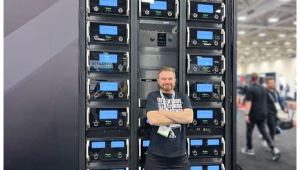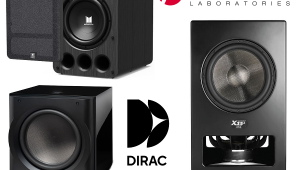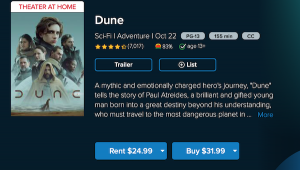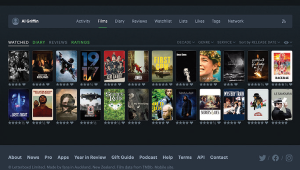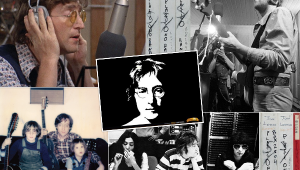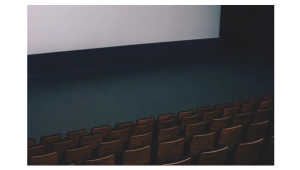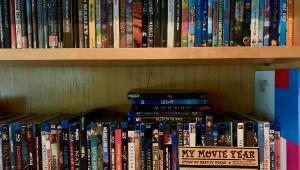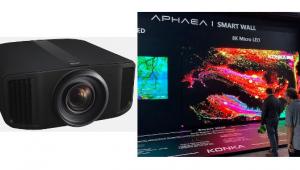The End of the Early Adopter

A couple of things triggered my inner consumer advocate as we finished shipping our May print issue (now on newsstands). First was the letter from reader James Deas (scroll to the end of this page) in which he describes being trapped in the surprise sinkhole created by the TV industry’s choppy transition from HDCP 1.4 to HDCP 2.2. Remember a few years back? The manufacturers were selling cutting-edge Ultra HD televisions that had the requisite HDMI 1.4 or HDMI 2.0 interface for 4K signals, but mated with a soon to be outdated chip for copy-protection management. Didn’t really matter at first until—whammy!—Hollywood turned on the new encryption. If you have one of those early 4K sets and buy yourself a new 4K Roku or Ultra HD (UHD) Blu-ray player, you’ll be watching 4K content in 1080p, or else buying a converter that tricks your 4K source into thinking it’s attached to an HDCP 2.2 TV.
The HDCP transition affected AV receiver purchasers as well. We went for much of 2014 and into 2015 with most manufacturers touting AVRs with new HDMI 2.0 ports for 4K passthrough while remaining silent about the fact that they were using the old copy protection that would someday fail to pass the new 4K content. Even if you knew what was going on and wanted to confirm before you bought, most often you couldn’t even find the HDCP version listed in their specs. We had to pry the information out of them every time we did a review.
I can go on about other recent TV/video advances that came with little notice for shoppers and left many with sets absent some significant new tech shortly after purchase. Case in point: High dynamic range (HDR), the most visually powerful of all the new features in the UHD wheelhouse. If you’re an enthusiast, you might have caught wind that it was coming with the launch of UHD Blu-ray and streams from the major services. But if you were an everyday TV shopper, you probably didn’t have a clue that a feature worth waiting for was imminent. Or that you might be buying a set that could play one but not both of the competing HDR formats being proffered. Or that each model year would bring about (as it has so far) notable advances in how bright the sets can get when reproducing HDR highlights.
Unless we get a fall surprise, no sets sold this year will have this new HDMI 2.1 port, and it remains to be seen if any will be upgradeable with firmware.
And I haven’t even mentioned what’s in the pipeline. In “HDMI 2.1: What You need to Know,” HDMI Forum chairman Chris Pasqualino, discusses advances we might see with the just-announced HDMI 2.1 spec. For once, the spec is about as forward-thinking as they could make it, anticipating 4K video at 120 hertz or even 8K at 60 Hz, full immersive multichannel audio (i.e., Atmos and DTS:X) delivered from a TV streaming platform or connected disc player to a receiver or soundbar via Audio Return Channel—oh, and a new 48-gigabit-per-second cable to realize the full proposed capabilities, up from the 18-Gbps max that marks the current standard. Old cables will be compatible with the new ports...but may not deliver on all of HDMI 2.1’s promise. Unless we get a fall surprise, no sets sold this year will have this new HDMI 2.1 port, and it remains to be seen if any will be upgradeable with firmware. Manufacturers “would have to plan for upgradeability by designing and building it into their products,” Pasqualino says. “For some features, it may be difficult, and the best path will be to incorporate HDMI 2.1-enabled silicon.”And how about HLG, or hybrid-log gamma, another HDR format set to join HDR10 and Dolby Vision. It’s targeted for future 4K broadcasts and streaming. But so far only Sony and LG have formally announced future firmware support for this year’s sets, at least here in the U.S. Of course, none of the sets sold today will be able to receive 4K broadcasts on their own anyway, because they won’t have the requisite ATSC 3.0 tuners. That final standard won’t even be released till later this year. So...cord-cutters beware.
Don’t get me wrong, folks. I’m as juiced as anybody about emerging technology that keeps making our experience better. From what I’ve seen, the best of this year’s TVs are going to look amazing. And I accept that new features and performance evolve all the time. As enthusiasts, we’ve always prided ourselves on being first on the block with new stuff, and we accept some risk of obsolescence. But this is different. With the speed things are moving today, no consumer is ever safe. If you wait till it settles out, you’ll never buy; if you buy, you may come to regret it. Truth is, there’s never been a better...or worse...time to buy a TV. Don’t say I didn’t warn you.
Not So Ultra After All
Regarding your review of the Roku Ultra: Having enjoyed a Roku 3 for three years, I made the jump to the Roku Ultra to enjoy 4K... and found I could not.
I am one of the tens of thousands of consumers who bought a UHDTV more than 18 months ago, only to learn that it is not HDCP 2.2 compliant. The Roku Ultra immediately recognized that and told me to stream in 1080p! I also could not stream Netflix and Amazon due to HDCP warnings.
Fortunately, after much research, I found that there exist HDCP-2.2-to-1.4 converters and connected one to my system. The Roku was connected to the converter, the converter to my Pioneer Elite receiver (also HDCP 1.4), and the receiver to my UHDTV. A $50 solution. I’m now happily streaming Roku
UltraHD 4K from Netflix and Amazon. By the way, Samsung and other TV manufacturers won’t admit to the HDCP issue and spin you for hours on the telephone! A Samsung rep, after 3 hours (yes, I am stubborn), promised to call me back and give me an HDCP “evolution kit.” He never did call back.
James Deas
Via e-mail
Of course, this incompatibility is no fault of Roku, who is merely following the current mandatory copyright protection scheme to allow its device to interface freely with the 4K content services.
Fortunately, Monoprice sells an HDCP- 2.2-to-HDCP-1.4 box like the one you described called the Blackbird 4K Pro HDCP converter that solves this problem for $30. But I’ve complained in the past about how the early adopters got shafted with the rollout of UHDTV, and they’re still getting it today. You can read more on this subject in my editorial.—RS


